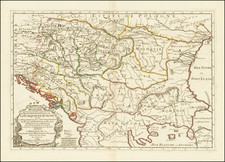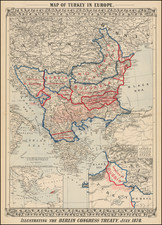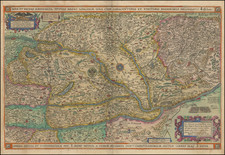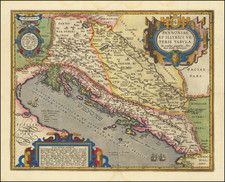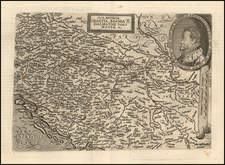The Turkish Recapture of Nis in 1737.
Rare plan of the fortifications and environs around the town of Nis in Serbia, from the Russo-Turkish War.
From the end of the Serbian Empire in the late 14th Century, the town of Nis was a constant source of confrontation between the Ottoman Empire and the Austro-Hungarian Empire. Nis first fell to the Ottoman Empire in 1385, after a 25-day-long siege. It was returned to Serbian rule in 1443. Niš again fell under Ottoman rule in 1448. In 1689, Niš was seized by the Austrian army during the Great Turkish War, but the Ottomans regained it in 1690.
In 1737, Niš was again seized by the Habsburg controlled forces, who attempted to rebuild the fortifications around the city. The same year, the Ottomans reclaimed the city without resistance.
Ultimately hostilities were ended later with the Treaty of Nis in 1739.
1739 Treaty of Nis
The Treaty of Niš was a peace treaty signed on October 3, 1739 in Niš (Serbia), by the Ottoman Empire and Russian Empire, to end the Russo-Turkish War of 1735-1739. The Russians gave up their claim to Crimea and Moldavia but were allowed to build a port at Azov, though without fortifications and without the right to have a fleet in the Black Sea. The war was the result of a Russian effort to gain Azov and Crimea as a first step towards dominating the Black Sea.
The Habsburg monarchy entered the war in 1737 on the Russian side, but was forced to make peace with Ottomans at the separate Treaty of Belgrade, surrendering Northern Serbia, Northern Bosnia and Oltenia (the Banat of Craiova). In return, the Sultan acknowledged the Habsburg Emperor as the official protector of all Ottoman Christian subjects, a position also claimed by Russia. The Austrian peace treaty, coupled with the imminent threat of Swedish invasion, compelled Russia to accept peace at Niš.
Rarity
We locate 2 examples (Martin-Luther-Universitat Hall-Wittenberg and Universitat van Amsterdam).









![Hungaria Ungarn [Hungary, Slovakia, Northern Croatia and Northern Serbia]](https://storage.googleapis.com/raremaps/img/small/76437mp2.jpg)
